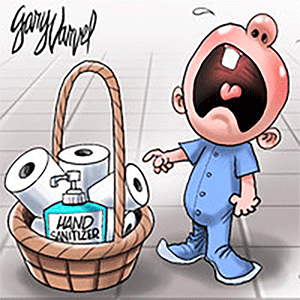Rays plan to play 2025 season at Tampa's Steinbrenner Field
Published in Baseball
TAMPA, Fla. — The Rays are planning to play the 2025 season at Tampa's Steinbrenner Field, spring training home of the rival New York Yankees.
The Rays have been looking for an interim home since Hurricane Milton caused extensive damage to Tropicana Field last month. Under a repair plan revealed Tuesday, the Trop won’t be playable until the 2026 season.
The Rays apparently chose Steinbrenner Field over Clearwater’s BayCare Ballpark, spring home of the Philadelphia Phillies, in consultation with Major League Baseball.
An announcement will be made later today.
“We have ongoing discussions with (the Rays), and they had talked to me about that,” St. Petersburg Mayor Ken Welch said. “… I understand their rationale for Steinbrenner. … I’ll let them speak to that.’
“We discussed Clearwater versus Tampa and why they might want to go in that direction, along with MLB.”
Newly elected Pinellas County Commissioner Vince Nowicki said Thursday morning he was told the Rays called St. Petersburg City Council members to tell them of their plans.
Details of the agreement with MLB and the Yankees, and the fate of the Class A minor-league Tarpons, who play at Steinbrenner Field during the summer, were not immediately clear.
Rays officials declined comment, as they have on any questions related to their preferences and prerequisites for potential homes.
Though there has been speculation about stadium sites across the state and country, as well as internationally, MLB commissioner Rob Manfred said last month he wanted the team stay in the Tampa Bay area and noted several workable options in spring training stadiums.
Steinbrenner Field, which opened in 1996 as Legends Field, sits across Dale Mabry Highway from Raymond James Stadium. It provides the largest capacity (11,026) of the spring stadiums, along with 13 suites, several club areas, social spaces and cabana seating, plus other upgrades from a $40 million renovation prior to the 2017 season.
Equally appealing, it has much of the required major-league-standard equipment, facilities and amenities for players in place. As a result, the facility would require the fewest upgrades to meet MLB regular season and players association standards.
A downside would be playing in the summer heat and rain. According to Florida State League data, the Tarpons over the last 10 seasons have averaged 6.4 postponements annually, nearly all weather-related.
Playing in Tampa also would provide the Rays an entrée to a segment of their market they seemingly have had trouble connecting with, bringing the game closer to fans who at times have cited the travel time to downtown St. Petersburg as prohibitive.
The decision is not likely to go over well with some Pinellas County commissioners, who wanted the team to remain in the county by playing in Clearwater or Dunedin (spring home of the Blue Jays). They have the leverage of voting against the bonds needed to finance the Rays’ planned $1.3 billion stadium, which could kill the deal.
Said commissioner Chris Latvala Thursday at a county workshop, “I’m not going to say you play in Dunedin or you play in Clearwater and I’m a yes. But if they play in Hillsborough, I’m a no. So, you know, they can do the math how they want to do the math.”
Welch, determined to get the Rays back to a repaired Trop in 2026, said he remains “optimistic” they could work with the county and keep the new stadium deal intact.
“We’re going to have that conversation about the long-term value of the deal with the Rays and see where it goes from there,” Welch said. “I still have faith that the 30-year deal makes sense for the county and the city. …
“I think the right economic decision will win out, and we’ll talk it through. End of the day, we’ve got a lot of priorities in the city. The deal that we put together still makes sense. … I see many paths to make it work.”
Welch is hoping the Rays need just one year in an interim home. An assessment report determined that repairs to the Trop will cost at least $56 million and take until just before opening day in late March 2026 to complete.
As a result, he said, there isn’t much they can do about 2025.
“If we had a perfect world, they’d be in the Trop, but we don’t have that. So they have to work that out,” Welch said. “My goal is to have the Trop repaired and have them back in ‘26 where they need to be in St. Pete.”
The Rays’ arrival would cause disruptions for the Yankees’ Tarpons farm team, which plays in the Low A Florida State League and is often the affiliate where major-league players start injury rehab assignments since the team has its minor-league base across the street.
Under the current schedules, there are 42 dates when the Rays and Tarpons — who averaged 993 fans per game last season — would both play at home. Manfred said there could be some adjustments to team schedules if there was an agreement for the Rays to play in a minor-league facility, and FSL officials have been told recently to expect changes.
Rays catcher Ben Rortvedt, a former Yankee, said last month that if the Rays ended up playing at Steinbrenner Field it would be workable.
“The facility is nice,” Rortvedt said. “The locker room is nice, they’ve been renovating it. There’s plenty of batting cages and (covered) mounds. It’s one of the nicer facilities I’ve been in.”
____
©2024 Tampa Bay Times. Visit tampabay.com. Distributed by Tribune Content Agency, LLC.







Comments